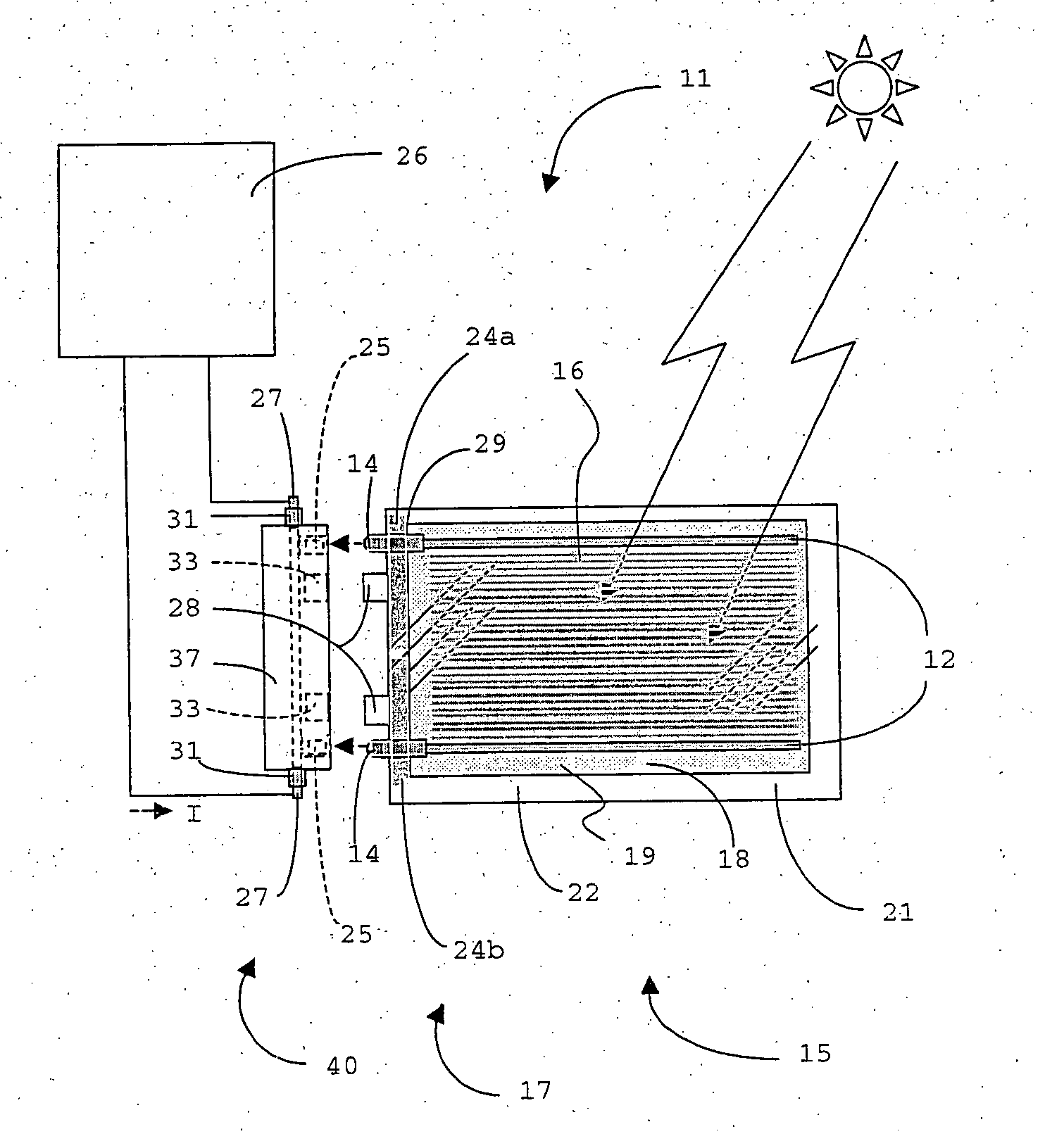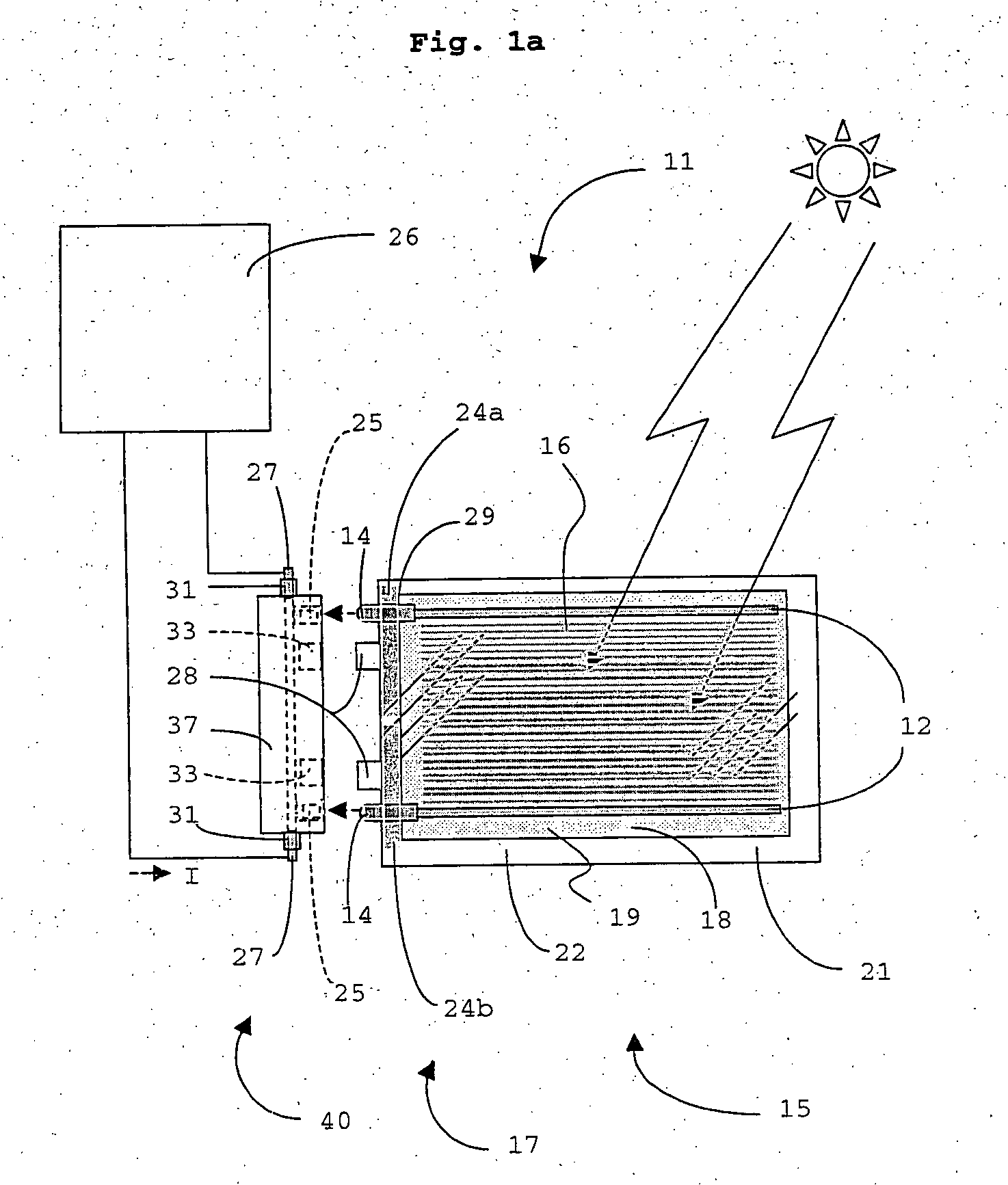Glass solar panels
a solar panel and glass technology, applied in the field of glass solar panels, can solve the problems of limited such usage, less reliable electrical connection, and less efficient electricity generation
- Summary
- Abstract
- Description
- Claims
- Application Information
AI Technical Summary
Problems solved by technology
Method used
Image
Examples
Embodiment Construction
[0034] There is shown in FIG. 1a a schematic of the integrated connection circuit 11 in accordance with the present invention. Solar light, radiating onto a glass solar panel 15, generates electrical current (I) in solar layers 16 that are disposed onto an electrically conductive coating surface 19 of an electrically conductive coating 18. The coating 18 is, in turn, disposed onto a major surface 21 of the glass sheet 22, for example, clear soda-lime, low iron soda-lime, and borosilicate glass. The solar layers 16 may comprise amorphous silicon, germanium, or cadmium telluride. The electrically conductive coating 18 comprises a doped metal oxide.
[0035] Disposed onto the electrically conductive coating surface 19 are at least two bus bars 12, which are in electrical contact with the solar layers 16 and the electrically conductive coating 18. The bus bars 12 preferably comprise copper, which is a good conductor, although other suitable conductive metals like silver may be used. If pr...
PUM
| Property | Measurement | Unit |
|---|---|---|
| Electrical conductivity | aaaaa | aaaaa |
| Electrical conductor | aaaaa | aaaaa |
Abstract
Description
Claims
Application Information
 Login to View More
Login to View More - R&D
- Intellectual Property
- Life Sciences
- Materials
- Tech Scout
- Unparalleled Data Quality
- Higher Quality Content
- 60% Fewer Hallucinations
Browse by: Latest US Patents, China's latest patents, Technical Efficacy Thesaurus, Application Domain, Technology Topic, Popular Technical Reports.
© 2025 PatSnap. All rights reserved.Legal|Privacy policy|Modern Slavery Act Transparency Statement|Sitemap|About US| Contact US: help@patsnap.com



